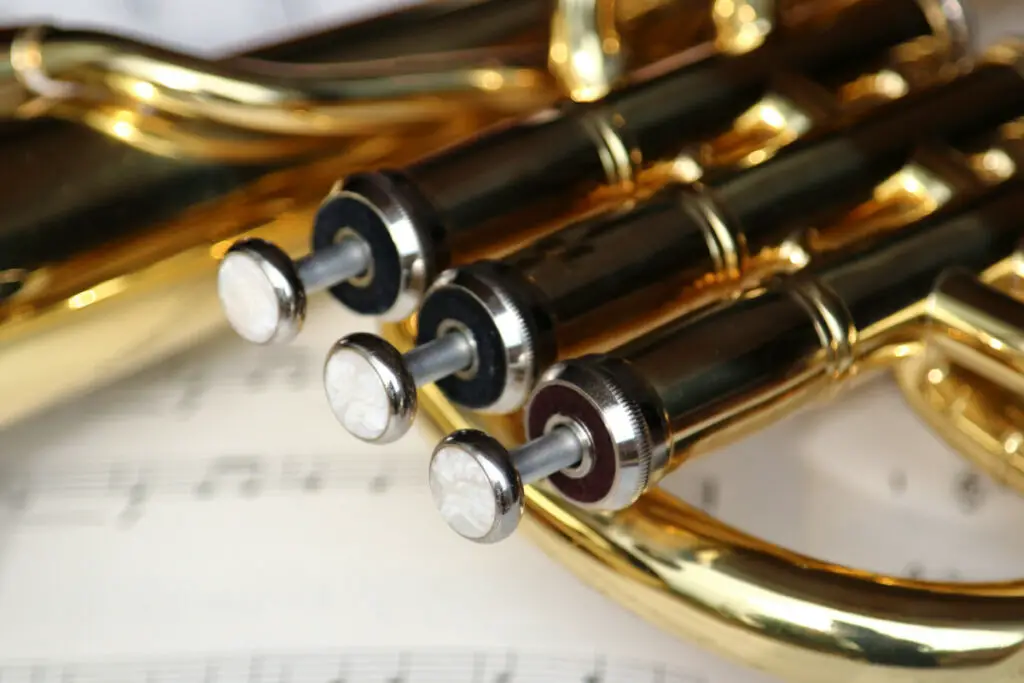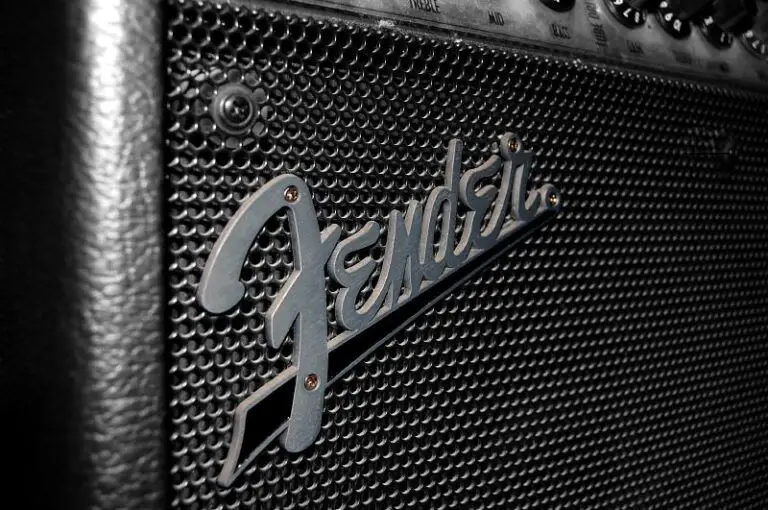Cornet vs Trumpet | Similarities and Differences

Trumpets and cornets are beautiful brass instruments that remind us of fanfare and grandeur. They are each beautiful, and they might appear the same to the unsuspecting viewer. But what are the differences between a cornet and a trumpet?
The main difference between a trumpet and a cornet is how the tubing is shaped throughout the instrument. The trumpet’s tubing is the same size for almost the entire instrument until the bell. The cornet’s tubing gradually increases throughout until it reaches the bell.
To learn more about each of these instruments, keep reading.
What is a Cornet?
A cornet is a brass instrument with a rich and melodic tone. If you look at a cornet, you might notice it is broad and has multiple loops in the tubing.
The cornet also has a large and deep bell. It has three buttons, usually called valves, that the musician presses to control the potential notes played. The mouthpiece on a cornet is shorter than other brass instruments.
You play by buzzing your lips into the cornet mouthpiece and applying pressure and air to the instrument. A cornet player changes what note they are playing by pressing different button combinations and changing the air pressure.
Cornets have an extensive range from the E below middle C up to an octave above high C. Cornets are also typically made to play in the key of B flat. A soprano cornet plays higher notes and is usually made to play notes in the key of E flat.
Cornets have been used to play melodic portions of an instrumental piece. Cornet music can be found in concert bands, jazz ensembles, and symphony orchestras. They are also often solo instruments, similar to trumpets.
What is a Trumpet?
A trumpet is a popular brass instrument most known for its use in your school’s band. It’s known for its bright and bold tones.
When you look at a trumpet, you’ll notice the tubing remains the same size until drastically changing sizes at the bell.
Like the cornet, the trumpet has three valves (or buttons) you can press to adjust the note. Although there are only eight possible button combinations, players change the note through this and changing air pressure. The range for a trumpet is identical to the cornet.
Trumpets have a variety of additional pieces you can add to change the tone or pitch of a sound. One of these pieces is called a mute. It’s often used to help bring out the brassy tones of a trumpet.

Similarities Between the Cornet or Trumpet
Cornets and trumpets have many things in common. They are made in similar ways, have a similar build, are members of the brass family, and work the same way. Many trumpet players can also play the cornet, as many musical techniques are almost identical between the two instruments.
Yet, there are differences between these two instruments. These differences include how long they have been made, when they became popular, what they are used for, how much they cost, and how often people play them.
Differences Between The Trumpet and Cornet
1. History
The trumpet has a much longer history than the cornet. However, this may be because they used that word to describe most instruments. The first metal-based trumpet was made in 2 BCE and found in Egypt. Cornets are much newer, as they were created in 1828.
Even though the trumpet has existed longer than the cornet, it took much longer to become popular in the United States.
For many years, people preferred the cornet and didn’t like the trumpet’s tone. When the B flat trumpet was designed in the 1900s, it became popular in the United States.
Nowadays, if you go into a high school band or professional orchestra performance, you will see multiple people playing the trumpet. However, it is rare to see high school students playing a cornet.
2. Styles of Music
A distinct difference between the trumpet and the cornet is what they were used for. A cornet was considered a solo instrument for many years. Musicians who played the cornet would often play rich musical phrases on their own.
Big brass bands often have a cornet player. Trumpets were used for fanfare and bright tunes. Now, in most pieces, these musical instruments are almost considered interchangeable.
3. Cost
The cost of a cornet can be substantially higher than a trumpet. A new cornet can cost anywhere from $50 to $2,500 A brand-new trumpet costs around $100 to $5000.
Much like other instruments, there are premium and budget versions of these. The low end of budget instruments is plastic. pBone trumpets and pCornets are incredibly inexpensive, but also very cheap.
Used cornets can cost as little as $15 due to their lack of popularity.
4. Ease of Use
While trumpets are more popular, cornets are easier to play and hold for long periods. Cornets are smaller than trumpets, which means they weigh less.
If you want to play the trumpet in the future, consider playing the cornet first. Playing the cornet will help you build up your arm muscles, making it easier to hold the trumpet when you start playing.
5. Bore Shape
The trumpet’s shape is cylindrical at the bore and has the same width throughout. The cornet’s bore (known as a conical bore) widens halfway through the instrument.
The bore is the instrument’s interior that makes up the large part of the horn (before the bell). The standard bore for most brass instruments is about 12 mm.
The shape of the bore creates a different sound. Because trumpets are smaller, they are brighter, while cornets can hit lower notes and softer sounds.
6. Tube shape
The cornet has a bit more winds in its tubing. This comes from the instrument’s compact size, requiring more creativity in fitting everything in.
Trumpets are larger and heavier, giving them more room and more tubing. But this tubing doesn’t affect the sound all that much.
7. Mouthpiece shape
Tumpet mouthpieces have a u-shaped interior, while cornet mouthpieces have a v-shaped interior. This is to complement the sounds of the various instruments.
Cup-shaped mouthpieces for trumpets are shorter. This directs the air into the trumpet faster, making a sharp sound.
Meanwhile, v-shaped mouthpieces are longer, creating more controlled airflow. The longer mouthpiece creates deeper, smoother tones that work better for the cornet.
These are the standard mouthpieces for the two instruments. You can get special mouthpieces for the two instruments.
If you want to visually represent the differences between a cornet and a trumpet, watch the following video.
With all of this in mind, it is clear that the cornet and the trumpet have their places in the music world. Brass instruments bring a bright sound that can elevate a piece of music and make it a wonderful experience for the musician and the audience.







